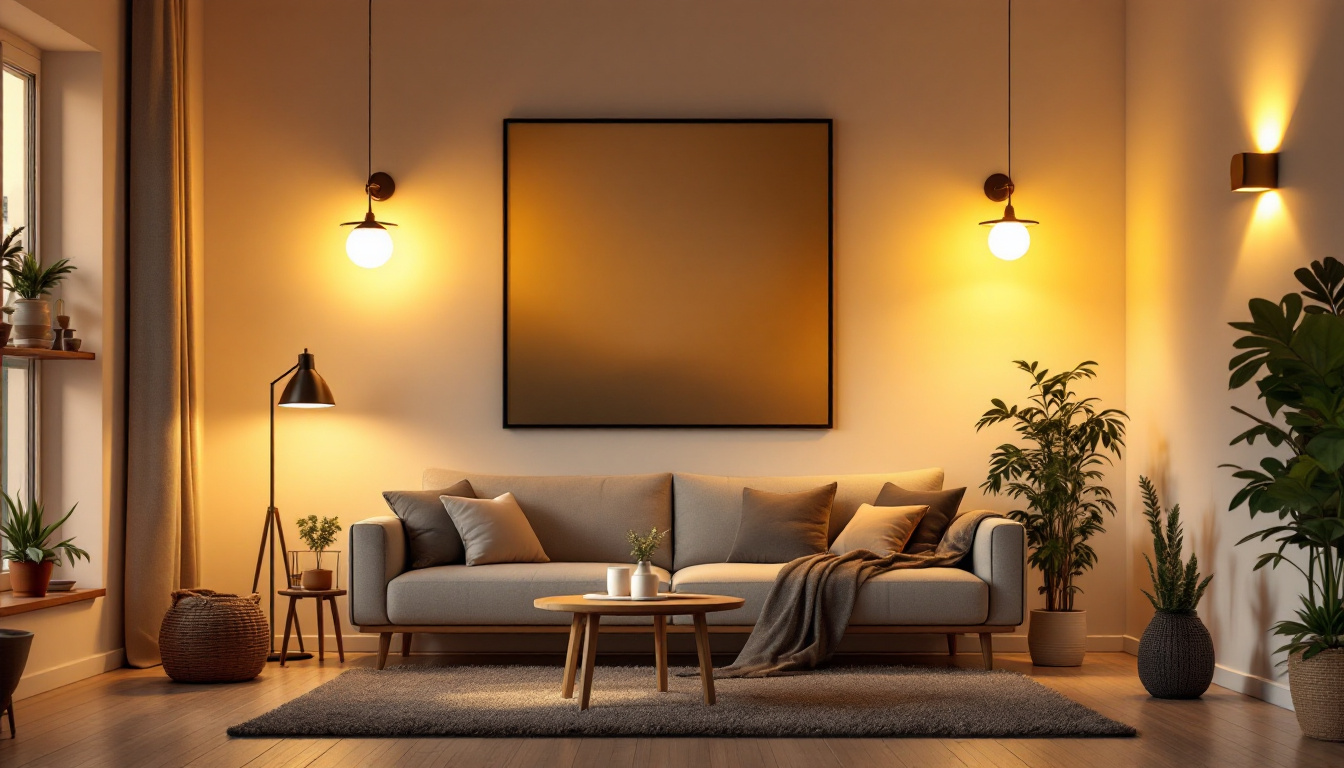
Lighting plays a pivotal role in the overall ambiance and functionality of a home. For lighting contractors, understanding the complexities of home lighting is essential to delivering quality service and ensuring customer satisfaction. This article aims to demystify various aspects of home lighting, offering insights into the latest trends, technologies, and best practices that every lighting contractor should be aware of.
lighting design is not merely about choosing the right fixtures; it involves a comprehensive understanding of how light interacts with space. A well-thought-out lighting design can enhance the aesthetics of a home while also improving its functionality. Effective lighting can transform a mundane room into a vibrant space, showcasing its best features and creating an inviting atmosphere. The interplay of light and shadow can dramatically change the perception of size and depth, making even the smallest of areas feel more expansive.
There are three primary types of lighting that contractors should be familiar with: ambient, task, and accent lighting. Ambient lighting provides overall illumination, task lighting focuses on specific areas for activities like reading or cooking, and accent lighting highlights particular features, such as artwork or architectural details. Each type of lighting serves a unique purpose, and a well-balanced combination of these can create a harmonious environment. Contractors should assess the needs of each room and recommend appropriate lighting solutions that meet both aesthetic and practical requirements.
For instance, in a kitchen, ambient lighting can be achieved through ceiling fixtures, while under-cabinet lights serve as task lighting for food preparation. Meanwhile, pendant lights over an island can serve as both task and accent lighting, adding a stylish focal point to the space. Understanding these nuances allows contractors to craft a lighting scheme that not only illuminates but also enhances the user experience in each room.
Color temperature, measured in Kelvin (K), significantly influences the mood of a space. Warm light (around 2700K) creates a cozy atmosphere, making it ideal for living rooms and bedrooms. In contrast, cooler light (above 4000K) is often better suited for workspaces, as it promotes alertness and concentration. The psychological effects of color temperature can’t be understated; warmer tones can evoke feelings of comfort and relaxation, while cooler tones can stimulate productivity and focus.
Contractors should educate clients on the importance of selecting the right color temperature for each area of the home. This knowledge can help clients make informed decisions that enhance their living spaces. Furthermore, the use of dimmable fixtures can provide versatility, allowing homeowners to adjust the light to suit various activities or moods throughout the day, from a bright, energetic atmosphere during the day to a soft, intimate glow in the evening.
With the growing emphasis on sustainability, energy-efficient lighting solutions are becoming increasingly important. LED lights, for example, consume significantly less energy than traditional incandescent bulbs and have a longer lifespan. Contractors should stay updated on the latest energy-efficient technologies and encourage clients to consider these options. Not only do these solutions reduce the carbon footprint of a household, but they also contribute to a more sustainable future.
In addition to helping the environment, energy-efficient lighting can lead to substantial cost savings for homeowners. Educating clients about these benefits can enhance their overall satisfaction with the services provided. Moreover, incorporating smart lighting systems that can be controlled via mobile apps or voice commands can further optimize energy usage, allowing homeowners to schedule lighting based on their routines and preferences. This level of control not only promotes efficiency but also adds a layer of convenience that modern homeowners increasingly value.
The selection of lighting fixtures is a critical aspect of any lighting project. Contractors must consider various factors, including style, functionality, and placement, to ensure that the chosen fixtures align with the client’s vision.
Current trends in lighting fixtures include a mix of vintage and modern designs. Industrial-style fixtures, for example, have gained popularity for their rustic charm, while sleek, minimalist designs appeal to contemporary tastes. Understanding these trends can help contractors make recommendations that resonate with clients.
Moreover, it is essential to consider the architectural style of the home when selecting fixtures. A cohesive design approach will enhance the overall aesthetic and create a more inviting atmosphere. For instance, a mid-century modern home might benefit from fixtures that feature geometric shapes and warm metals, while a traditional home may be better suited to ornate chandeliers or classic sconces. By aligning the lighting choices with the home’s character, contractors can create a harmonious environment that feels both intentional and stylish.
Proper placement of lighting fixtures is crucial for achieving the desired effect. Contractors should consider factors such as ceiling height, room dimensions, and furniture arrangement when planning the layout. Layering different types of lighting can also add depth and dimension to a space.
For instance, combining ambient lighting with task and accent lighting can create a well-rounded illumination that enhances both functionality and aesthetics. Contractors should encourage clients to think about how they use each space and recommend lighting solutions that cater to those needs. In a home office, for example, a combination of overhead lights for general illumination, desk lamps for focused tasks, and accent lighting to highlight artwork can create a productive yet inviting workspace. This thoughtful approach ensures that each area serves its purpose effectively while maintaining a cohesive design.
The rise of smart home technology has transformed the lighting industry. Smart lighting systems allow homeowners to control their lights remotely, set schedules, and even adjust color temperatures. Contractors should familiarize themselves with these systems and be prepared to integrate them into their projects.
Offering smart lighting solutions can set contractors apart from competitors and provide added value to clients. Educating homeowners on the benefits of smart lighting, such as convenience and energy savings, can lead to more informed purchasing decisions. Additionally, smart lighting can enhance security; homeowners can program lights to mimic their presence when they are away, deterring potential intruders. As technology continues to evolve, staying updated on the latest innovations in smart lighting will not only benefit contractors but also empower clients to create a more efficient and responsive living environment.
Proper installation is vital to the performance and longevity of lighting systems. Lighting contractors should adhere to best practices to ensure that installations are safe, efficient, and visually appealing.
Contractors must be well-versed in local electrical codes and regulations. Compliance is not only essential for safety but also protects contractors from potential liability issues. Staying informed about any changes in regulations can help contractors maintain their credibility and ensure that their work meets industry standards.
Additionally, understanding the specific requirements for different types of fixtures, such as those used in wet or damp locations, is crucial for ensuring safe installations.
After installation, thorough testing is essential to verify that all lighting systems function correctly. Contractors should check for issues such as flickering lights, incorrect color temperatures, and inadequate brightness levels. Addressing these concerns before completing the project can prevent client dissatisfaction and costly callbacks.
Quality assurance should also extend to the materials used in installations. Using high-quality fixtures, wiring, and components can enhance the overall performance and longevity of the lighting system.
Effective communication with clients is key to a successful lighting project. Contractors should take the time to explain the installation process, discuss the benefits of various lighting options, and address any concerns the client may have.
Providing clients with educational resources, such as brochures or links to informative websites, can empower them to make informed decisions about their lighting needs. This approach not only builds trust but also fosters long-term relationships with clients.
Once the lighting system is installed, ongoing maintenance is crucial for ensuring optimal performance. Contractors should advise clients on how to care for their lighting fixtures and systems to extend their lifespan.
Encouraging clients to conduct regular inspections of their lighting systems can help identify potential issues before they become significant problems. This includes checking for burnt-out bulbs, loose connections, and signs of wear and tear on fixtures.
Contractors can offer maintenance services or create a maintenance schedule for clients, ensuring that their lighting systems remain in top condition. This proactive approach can enhance client satisfaction and lead to repeat business.
As technology continues to evolve, homeowners may wish to upgrade their lighting systems to incorporate the latest advancements. Contractors should be prepared to discuss options for retrofitting existing fixtures with energy-efficient bulbs or integrating smart technology.
Offering upgrade solutions not only keeps clients’ homes current but also positions contractors as knowledgeable professionals who are invested in their clients’ long-term satisfaction.
Seasonal changes can impact lighting needs. For instance, during the winter months, homeowners may require additional lighting to combat shorter days. Contractors should be aware of these seasonal considerations and offer tailored solutions to meet clients’ needs throughout the year.
Additionally, holiday lighting presents an opportunity for contractors to provide specialized services. Understanding the nuances of festive lighting can help contractors capitalize on seasonal demand and enhance their service offerings.
In the ever-evolving world of home lighting, staying informed and adaptable is essential for lighting contractors. By understanding the importance of lighting design, choosing the right fixtures, adhering to installation best practices, and offering ongoing maintenance, contractors can elevate their services and meet the diverse needs of their clients.
As lighting technology continues to advance, embracing energy efficiency and smart solutions will not only benefit clients but also position contractors as leaders in the industry. With a commitment to quality, education, and client satisfaction, lighting contractors can thrive in a competitive market, ensuring that homes are beautifully illuminated for years to come.
Ready to take your lighting projects to the next level? At LumenWholesale, we provide lighting contractors like you with the highest quality, spec-grade lighting products at prices that can’t be beaten. Say goodbye to local distributor markups and hello to our extensive selection that meets rigorous industry standards. With free shipping on bulk orders, we ensure you get the premium lighting you need at the best value — all without hidden fees or compromises. Elevate your service offerings and delight your clients with reliable, high-performance lighting. Wholesale Lighting at the Best Value is just a click away. Experience the LumenWholesale difference today!

Discover the frequent pitfalls lighting contractors encounter when installing solar patio lamps.

Discover effective strategies for lighting contractors to tackle common challenges in post lamp pole installations.

Discover innovative hacks for smart lighting contractors to enhance outdoor spaces with large solar lights.

Discover how lighting contractors can enhance their projects and increase client satisfaction by incorporating versatile jelly jar lights.